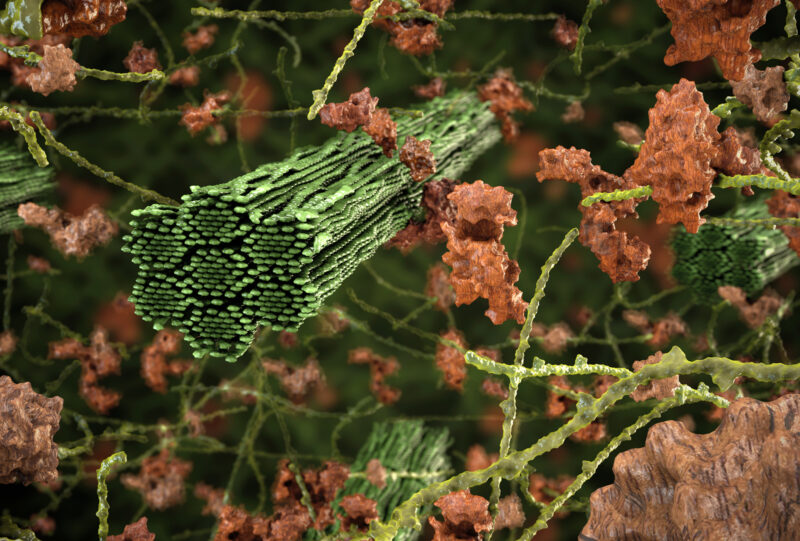Common Physical Processes in Different Biomass Pretreatments
10/29/2013

Illustration of structural rearrangement of cellulose and matrix copolymers during thermochemical pretreatment of lignocellulose biomass. [Image courtesy of Thomas Splettstoesser, scistyle.com, Berlin, Germany.]
The Summary
Lignocellulosic biomass, a potentially important renewable source of energy and chemical feedstocks, resists degradation to glucose during industrial hydrolysis processes and thus requires expensive thermochemical pretreatments. Understanding the mechanism of biomass breakdown during these pretreatments can lead to more efficient use of biomass.
Researchers used X-ray fiber diffraction and small-angle neutron scattering (SANS) at the CG-2 instrument at the High Flux Isotope Reactor (HFIR) facility of Oak Ridge National Laboratory to probe the molecular structure of biomass at different length scales during steam explosion pretreatment. Next, they used the data in molecular dynamics simulations to reveal two fundamental processes responsible for the resulting morphological changes: cellulose dehydration and lignin-hemicellulose phase separation. They further found that the basic driving forces occurring during steam explosion are the same as in other leading thermochemical pretreatments, such as dilute acid pretreatment and ammonia fiber expansion.
The findings suggest that new pretreatments and plant modifications that promote lignin and hemicellulose phase separation and increase the porosity of the cell wall matrix while preventing increases in cellulose crystallization as a result of dehydration can improve biomass conversion.
Related Links
References
Langan, P., L. Petridis, H.M. O’Neill, S.V. Pingali, M. Foston, Y. Nishiyama, et al. 2014. “Common processes drive the thermochemical pretreatment of lignocellulosic biomass.” Green Chem. 16(1):63-8. [DOI:10.1039/C3GC41962B]
